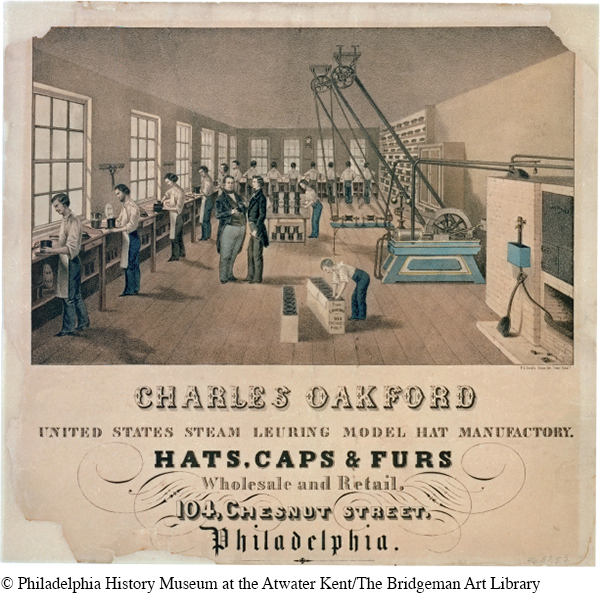The Panic of 1837 in the North
The panic of 1837 began in the South but hit northern cotton merchants hard (see “Van Buren and the Panic of 1837” in chapter 10). With cotton shipments sharply curtailed, textile factories drastically cut production, unemployment rose, and merchants and investors went broke. Those still employed saw their wages cut in half. In Rochester the Posts moved in with family members to save their small business from foreclosure. Petty crime, prostitution, and violence also rose as men and women struggled to make ends meet.
In Lowell, hours increased and wages fell. Just as important, the process of deskilling intensified. Factory owners considered mechanization one way to improve their economic situation. A cascade of inventions, including power looms, steam boilers, and the steam press, transformed industrial occupations and led factory owners to invest more of their limited resources in machines. At the same time, the rising tide of immigrants provided a ready supply of relatively cheap labor. Artisans tried to maintain their traditional skills and status, but in many trades they were fighting a losing battle.

By the early 1840s, when the panic subsided, new technologies did spur new jobs. Factories demanded more workers to handle machines that ran at a faster pace. In printing, the steam press allowed publication of more newspapers and magazines, creating positions for editors, publishers, printers, engravers, reporters, and sales agents. Similarly, mechanical reapers sped the harvest of wheat and inspired changes in flour milling that required engineers to design machines and mechanics to build and repair them.
These changing circumstances fueled new labor organizations as well. Many of these unions comprised a particular trade or ethnic group, and almost all continued to address primarily the needs of skilled male workers. Textile operatives remained the one important group of organized female workers. In the 1840s, workingwomen joined with workingmen in New England to fight for a ten-hour day. Slowly, however, farmers’ daughters left the mills as desperate Irish immigrants flooded in and accepted lower wages.
For most women in need, charitable organizations offered more support than unions. Organizations like Philadelphia’s Female Association for the Relief of Women and Children in Reduced Circumstances provided a critical safety net for many poor families since public monies for such purposes were limited. Although most northern towns and cities now provided some form of public assistance, they never had sufficient resources to meet local needs in good times, much less the extraordinary demands posed by the panic.
REVIEW & RELATE
How and why did American manufacturing change during the first half of the nineteenth century?
How did new technologies, immigration, and the panic of 1837 change the economic opportunities and organizing strategies for northern workers?
Exploring American HistoriesPrinted Page 358
Exploring American Histories Value EditionPrinted Page 265
Chapter Timeline